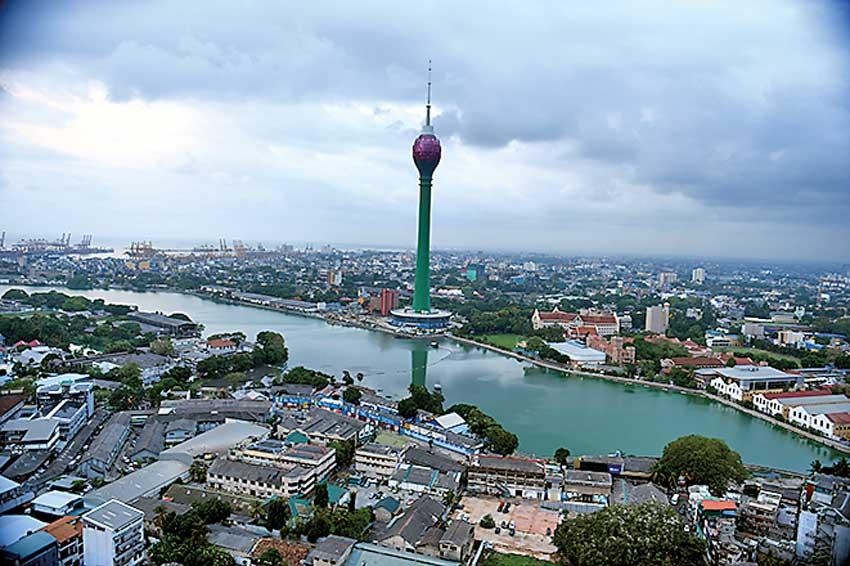07 Aug 2020 - {{hitsCtrl.values.hits}}

By 2050 70% of the world's population will be living in towns and cities
 The rapid pace at which ‘urbanisation’ takes place in the modern age cannot be ignored. It is an important social process, underpinning the very dynamics of human society; especially in the context of the 21st Century. As at present more than 50% of the world’s population resides in urban areas and it has been estimated that by the year 2050, 70% of the world’s population will be living in towns and cities. Therefore, as time progresses, the inevitable and crucial impact urbanisation will have upon the health of a given population will be a significant one, especially in countries such as Sri Lanka.
The rapid pace at which ‘urbanisation’ takes place in the modern age cannot be ignored. It is an important social process, underpinning the very dynamics of human society; especially in the context of the 21st Century. As at present more than 50% of the world’s population resides in urban areas and it has been estimated that by the year 2050, 70% of the world’s population will be living in towns and cities. Therefore, as time progresses, the inevitable and crucial impact urbanisation will have upon the health of a given population will be a significant one, especially in countries such as Sri Lanka.
Healthcare
Urban health is the study of urban characteristics – including features of the social and physical environment and features of the urban resource infrastructure – that can influence health and disease in the urban context. With the advent of democracy in 1931, the Government expanded the rural network of medical facilities throughout Sri Lanka, and most substantially in the previously underserved malarial districts. It must be pointed here that incidentally, over 50,000 people died during the 1934-35 Malaria outbreak. Between 1945 and 1952, mortality rates in Sri Lanka across all demographic groups were halved, and life expectancy increased up to 12 years. For decades this progress was attributed to the introduction of DDT-spraying against the malarial vector, but more recent assessments have shown that malaria control played only a minor role; mortality reductions occurred in both malarial and non-malarial areas. The critical intervention was expanded access to curative facilities in rural areas and an improved supply of antibiotics, which became possible after 1945.
From the early 1950’s the migration of people from the rural areas to the towns gathered momentum and this may have been partly because less attention was given to the economic activities and infrastructure development in the rural areas. With the consolidation of the health system in the 1960s, physical access to basic health amenities within close proximity became the reality for almost the entire population. High coverage has been the key to reducing mortality rates and has led to continuous improvement in health indicators for both the rich and poor by the 90’s.
Affects on physical health
Negative effects of urbanisation on people’s health could be attributed to several areas. One of them is overcrowding which gives rise to issues such as sharing of toilets. This is not only unhygienic if not maintained but it will also be a barrier for the privacy of women. If poorly maintained it is not only unhygienic for the users but it will also be a barrier for women’s privacy. Poorly maintained sewerage facilities will result in overflows especially during rain and floods giving rise to health hazards. Air pollution is another issue that all people in Colombo face on a daily basis. Traffic is a significant air-pollutant in the local setup since almost all vehicles run on fossil fuels. Those with respiratory illnesses will experience greater inconveniences. Access to improved water and sanitation is high in urban areas. However, the sustainability of urban water supply systems requires better management of available water resources.
Currently there are certain areas in the North Central Province whose water has been contaminated by the prolonged use of chemical fertiliser resulting in people contracting kidney-related diseases. But sewerage facilities need to be expanded to cope with rising population densities. Currently the Colombo Municipal Council is the only local authority with a sewerage network. In most other areas, the present system of septic-tank sewerage management is becoming increasingly less sustainable due to inadequate regulation of septic systems, contamination of groundwater, and improper sludge disposal. Unchecked, these factors combined have the capacity to cause a considerable burden on the country’s economy due to the rise in water-borne diseases such as typhoid, cholera, dysentery, diarrhoea along with various skin and eye related diseases. The rising trend of NCDs can be attributed to an increased sedentary lifestyle, high-stress jobs and easier access to processed foods which are high in calories and low in nutrition. It has been estimated that more than 75% of total deaths in Sri Lanka are due to NCDs. Urbanisation affects mental health through the influence of increased stressors and factors such as overcrowding, work stress, polluted environs and reduced social support. As a result, there’re higher rates of crime and violence as well as substance abuse and alcoholism in urban areas.
Solutions
Improvements in the health status of a population cannot be achieved simply by expanding and developing the health services. This is especially true of the urban sector.
Prevention and control of disease and the promotion of health require the combined efforts of multiple stakeholders including policymakers, environmentalists, community physicians, civil engineers, urban planners, and the community as a whole, to bring about the required change.
(The writer is an MO – Dialysis and serves at the Base Hospital in Tellippalai, Jaffna)
21 Dec 2024 6 hours ago
21 Dec 2024 7 hours ago
21 Dec 2024 21 Dec 2024
21 Dec 2024 21 Dec 2024
21 Dec 2024 21 Dec 2024